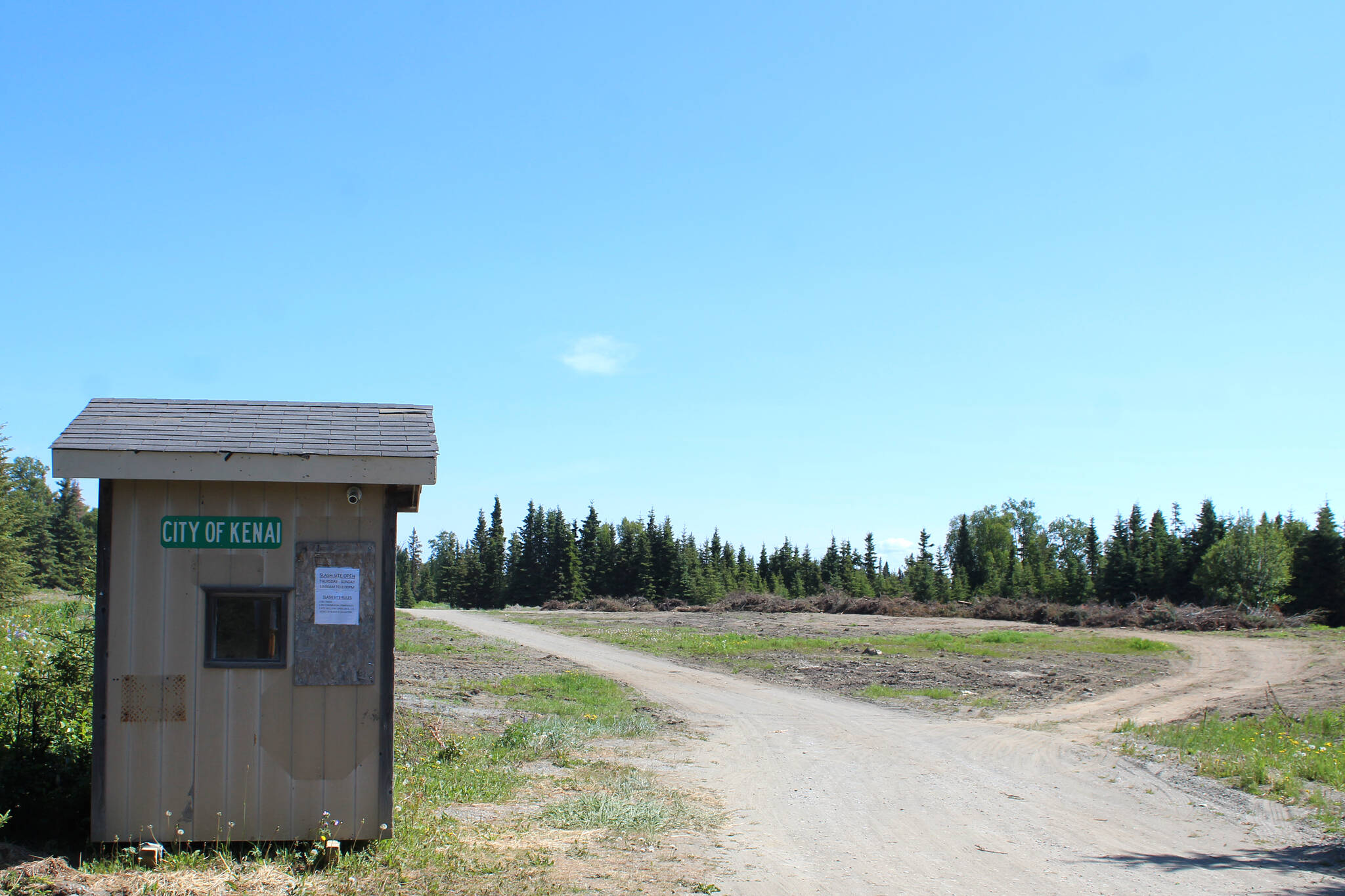The Kenai Peninsula Borough will use $300,000 in general funds to set up temporary slash disposal sites in multiple communities throughout the borough following unanimous approval of the move by borough assembly members Tuesday.
The proposal to set up disposal sites came about due to the “increasingly woody debris” caused by the current spruce bark beetle outbreak, Marcus Mueller and Dakota Truitt of the borough’s land management division wrote in a June 9 memo to assembly members.
“By increasing accessibility of Firewise slash disposal sites, we incentivize the appropriate and safe disposal of woody debris, instead of relying on each individual to safely burn slash, at an increased risk of fire escapement, dispersed across the Central Peninsula,” Mueller and Truitt wrote.
The same memo said that the scale of brush disposal and the work needed to maintain brush piles at the Central Peninsula Landfill in Soldotna has become burdensome for the borough’s Solid Waste Department. The amount of brush brought to the landfill increases every year, and the borough has received smoke complaints when burning operations are underway.
Public slash disposal sites are identified as a “high-priority mitigation strategy” for fire hazards in the borough’s Kenai Peninsula Community Wildfire Protection Plan, the ordinance passed Tuesday says. It also says that slash facilities incentivize property owners to firewise their land and dispose of slash properly.
“Immediate, emergency action is needed to deal with massive amounts of woody debris generated from firewise activities in response to the spruce bark beetle mortality,” the legislation says.
Bids will be solicited for sites in the communities of Kasilof, Nikiski, Cooper Landing and Sterling. That’s per a June 21 email from Kenai Peninsula Roads Director Dil Uhlin to Kenai Peninsula Borough Clerk Johni Blankenship. The exact locations of the sites haven’t been selected yet.
The sites, when up and running, would be managed by the borough’s Land Management Division, Mueller and Truitt wrote. The borough is also seeking grant funding for the sites.
The sites build on efforts by local municipalities, including the cities of Kenai and Soldotna, to take down hazardous trees that have succumbed to the beetles.
As of early June, the City of Kenai is operating a slash disposal site at Mile Marker 13 of the Kenai Spur Highway, near the soccer fields. That site, made possible through $150,000 in grant funding from the State of Alaska Division of Forestry, is staffed and open Thursdays through Sundays from 10 a.m. to 6 p.m. Commercial companies are not allowed to dump at the site.
More than 1.6 million acres of land in Southcentral Alaska have experienced spruce bark beetle infestation, including 21,000 acres of forested land that is managed by the Kenai Peninsula Borough. The dead and dying white and Lutz spruce trees affected by the beetles are hazardous; they’re prone to falling over and are especially susceptible to fires.
A common indicator of beetle presence is boring dust, similar to sawdust, which collects at the base of the infected tree and in bark crevices. The dust is pushed out of holes in the bark where beetles enter and clear tunnels under the bark. Pitch tubes, or red globs on the surface of the tree bark, are seen where the tree has tried to push the beetles out.
The assembly’s full July 5 meeting can be streamed on the borough’s website at kpb.us.
Reach reporter Ashlyn O’Hara at ashlyn.ohara@peninsulaclarion.com.


